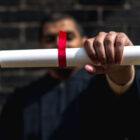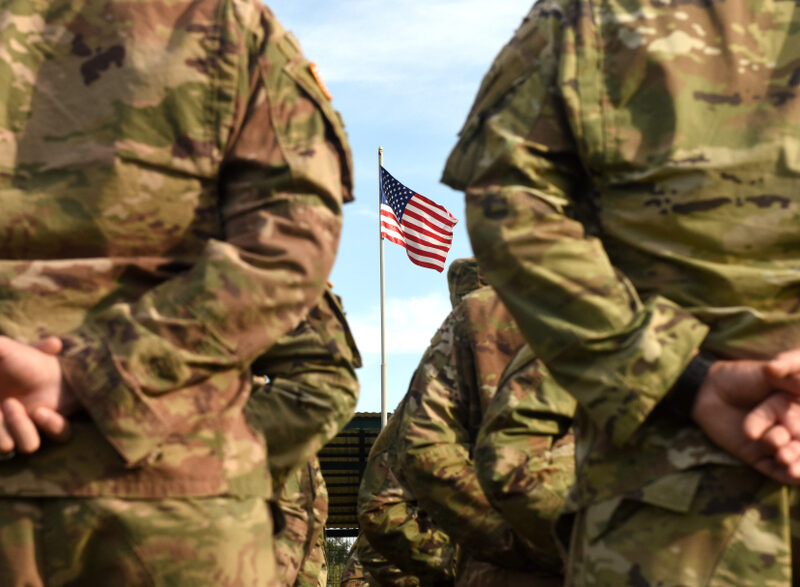Most school shootings don’t just happen out of nowhere – there are typically warning signs. This past September 4, a 14-year-old boy was arrested for allegedly opening fire in his Georgia high school math class – killing two teachers and two students. Only a year ago, authorities visited his home to investigate several anonymous tips about online threats to commit a school shooting. What went wrong in Georgia and how can we prevent this from happening in the future?

Here’s how I use my story to teach incarcerated kids that writing matters
|
Recently, at one of the writing workshops that I teach at three juvenile lockups in and around my hometown of St. Louis, one of my students posed a provocative question: “Why should I write about changing the world when the world doesn’t care about me?”

I lost a friend to gun violence when I was in high school. Now, I counsel Chicago students facing similar pain.
|
When you say the names of the Chicago communities where I grew up, they may evoke negative images. Both are neighborhoods with some of the city’s highest rates of gun violence. I grew up in North Lawndale and have lost friends and family on its streets. In the spring of ninth grade, one of these murders changed my life.

Trauma-informed ‘hubs’ reduce Chicago youth incarceration
|
A 65% reduction in youth incarceration between 2005 and 2021 and the closing of two youth prisons during that time are among the great strides of Redeploy Illinois, an innovative Cook County program allowing communities to tailor state-funded juvenile treatment services to meet their particular characteristics and needs.

Juvenile justice staffing crisis: Time to reimagine our approach
|
We recently conducted a survey of juvenile justice agencies on their staff hiring and retention challenges. Over 200 individual state and local juvenile corrections and probation agencies representing 37 states and over 190 counties reported that they are facing greater staffing difficulties than at any time in the past 10 years.

To end the age of incarceration, three communities pioneer a developmental approach
|
People ages 18 to 25 are over-represented at every stage of the criminal legal system and have the highest recidivism rate of any age group. It is obvious that we are responding badly to the developmental needs of these emerging adults — and “we” includes everything from schools and health care to law enforcement, judicial and correctional systems.

As Second Chance Pell Grant program grows, more incarcerated people can get degrees – but there’s a difference between prison-run and college-run education behind bars
|
An expansion in access to federal financial aid through Pell Grants for those who are incarcerated will soon make higher education a bit more available to them. As of 2014, only 15% of people earn a college degree or postsecondary certificate either before or during their incarceration.

No place for (most) kids
|
Despite a large drop in youth arrests, probation caseloads and confinement of young people in detention centers and youth prisons over the past 20 years, the punitive mindset in our justice system remains stuck in place. We’re spinning our wheels when court is our primary response to youth misbehavior.

California: Is this how you want your kids to be treated?
|
“How would you want your kids, if they were in these facilities, to be treated?”
That question was raised by formerly incarcerated youth and current juvenile justice advocate James Martinez at a meeting of California’s Board of State and Community Corrections. The BSCC is a state agency tasked with overseeing jails and county-level juvenile facilities in California. In early November 2022, the board’s Executive Steering Committee, met to begin rewriting critically important rules governing juvenile camps, ranches and halls.

Opinion: Balancing incentives and sanctions to achieve youth justice progress
|
Recently I became aware of additional research on youth probation published by the National Partnership for Juvenile Services that provides compelling findings related to juvenile probation and juvenile courts’ use of incentives versus sanctions to achieve reductions of recidivism among youth.

Opinion: Teen shooters should be judged as teens, not adults
|
Few among us are oblivious to the suffering that results from certain crimes committed by youthful offenders. As researchers and citizens, we agree that those who harm another person must be held accountable. However, the immaturity of a young person must be considered in meting out an appropriate punishment.
A person's brain must be fully developed before it can be discerned whether that individual will continue to offend or was just a child who make a horrible mistake.




